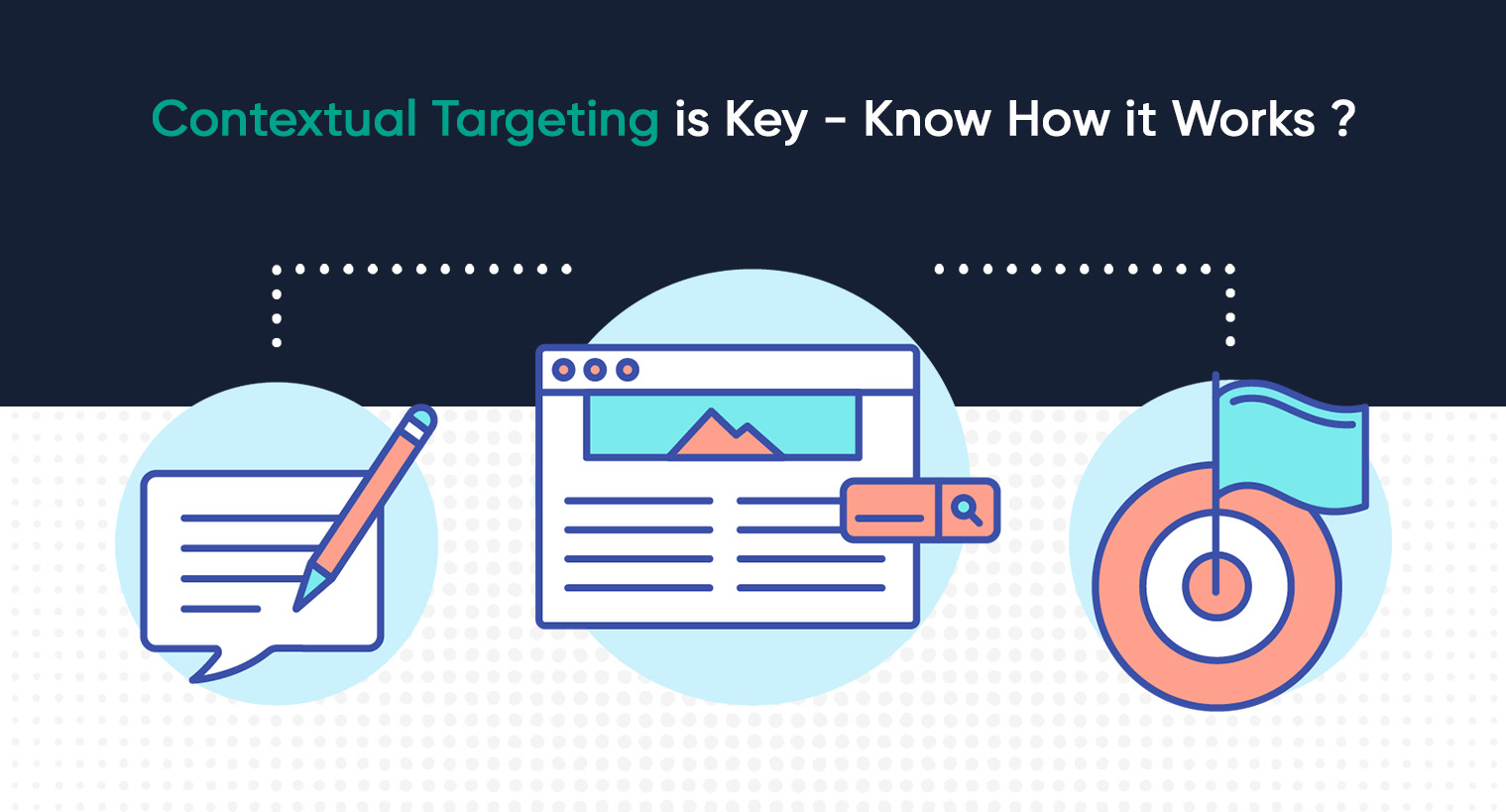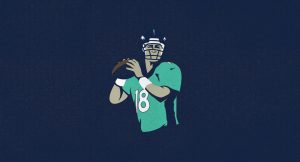Contextual Approach to Target Digital Advertising | 07 Jun, 2022

Years before, one of the most spirited topic for debate was whether to put budget against contextual or behavioral targeting. Every marketer wants to approach their target audience at the right time in the right context. This has been achieved by the implementing the methods of contextual targeting.
So the question now arises, what is contextual advertising? and why is it on top of mind now?
In this article, we will cover all the aspects of Contextual advertising, starting from what it is to why is it so important to target digital advertising and various contextual advertising services.
What is Contextual Advertising?
Contextual Targeting is the process or practice of displaying ads that are relevant to website’s content instead of just user’s data. It is a targeted and automated form of digital advertising. Imagine placing an ad for shoes on a clothing website, or an advertisement for dishware on recipe site. It’s kind of placing a digital version of print ad on a highly reputed magazine.
The idea of contextual approach has been in the market for a really long time. However, it has been gaining more popularity ever since the privacy regulations have become more strict. Moreover, the whole practice of contextual advertising or targeting majorly relies on context and not on users personal data.

What are the Different Types of Targeting?
There are various different types of ad targeting present for digital advertising. Let’s check five of the most popular practices of targeting:
- Behavioral Targeting
Behavior targeting is focused more on on the actions a user made before reaching the web page, whether it’s clicking a particular link, product page or article. One good example of behavioral advertising is retargeting ads.
- Contextual Targeting
In this method, we practice deploying ads based on website’s content. It works by assuming someone visiting a site and shall be interested in buying other types of utility products as well.
- Search Retargeting
Search retargeting means displaying ads to users when browsing the web as per their keyword search behavior. In simple way, it means that when you set up a search ad campaign, you choose the type of keywords which matches your business or products. Let’s take an example to understand this term better. Imagine a company selling women’s shoes also serves ads for searchers looking for “women’s boots” or “black heel evening shoes.”
- Site Retargeting
One of the most common type of retargeting consist of showing ads to the users which visited your site but left without making any purchase or did an action which showed their interest in your content. This targets brand recognition, this method can bring a high ROI by targeting the bottom part of the funnel.
- Predictive Retargeting
Predictive retargeting uses data collected by behavioral targeting adding a bit of 3rd party data mix and analyzing & predicting buying patterns with the help of artificial intelligence and machine learning. With the help of the AI feature, it can detect behavior patterns, identify products to upsell or cross-sell and target those audience which is most likely to convert.
How Does Contextual Advertising Work?
Contextual advertising uses artificial intelligence and deep machine learning to analyze content like text, speech, imagery and geolocation in real time. Contextual advertising services uses tools like Silverpush’s Mirrors to analyze all this data and content to understand if the user will click on your ad. The deep analysis by AI is just like how a human would deploy your ad manually, which ensures that your ad is placed contextually at relevant place, and is received to your target audience at the right time.
Silverpush’s AI technology Mirrors detects in-video contexts such as faces, logos, objects, emotions, places, actions, on-screen text and audio. In addition to this, it also intelligently avoided placing ads against content falling under unsafe/ unsuitable categories like kids, violence, politics, Covid 19 and others.

Reach Target Audience in a Cookieless World
There is no secret that we all love privacy and are very hesitant to share our personal information online. In fact, in a recent survey by Startpage, it is shown that around 72% of Americans are “very concerned” to “extremely concerned” about their online privacy. There are various methods available to target your audience. However, because of the new regulations like GDPR, it is going to be difficult for both publishers and advertisers to get consent from users to collect their data for targeting.
[Also Read: Learn About Contextual Targeting and Relevance of Ads]
What are the Pros and Cons of Contextual Targeting in Digital Advertising?
Now, that we have understood the concept of contextual targeting (let’s hope for the best!) shall we now proceed further to see the pros and cons of contextual advertising. It’s no doubt it is one of the most effective method of digital advertising but like every coin has two sides, it also has its cons which should also be addressed. These are –
Pros of Contextual Targeting
- Since it relies very little on personal data, contextual targeting is very effective as it compliances with regulations like GDPR with ease. Furthermore, if you don’t collect personal data but only information about the website, then the targeting is outside the terms of the GDPR, and regulation doesn’t apply.
- If done right, contextual targeting can enhance the user experience by adding information to the content in timely manner. Some studies have shown that contextual targeting may increase purchase intent by 63%.
- Contextual targeting is majorly focused on interest of the user. For example, contextual advertisements in review sites may increase the number of clicks.
Cons of Contextual Targeting
- You need to be extra mindful when setting up your ad campaign to ensure that the context is not too broad.
- Frequency capping can be an issue.
What are the Future Trends of Contextual Advertising?
Contextual advertising may have been around for a long time but nothing remains static especially when the technology is developing every day. Here, we have mentioned some of the top trends about contextual advertising that you can look out for in the future.
Advancement in relevant software
In order to improve the relevance of targeted ads, developers are trying to improve the need to just insert a JavaScript code into the webpage.
In-text video contextual advertising methods
There are some new technologies emerging in the digital market which allows placing in-video text advertisements on YouTube. It can scan the video for content and display ad based on it.
In-game contextual ads
For some time, developers are trying their best to insert contextual advertising in video games. If an ad appears in the middle of a game it can become very annoying for the gamers. Thus, inserting an ad before or after a game is much more effective and less disruptive for the gamer. With app developers who are trying to monetize their applications, thus developers are trying to find a way to integrate contextual advertising without interfering with the gaming experience.
FAQs on Contextual Approach to Targeting Digital Advertising
Ques. What is Contextual Targeting in digital marketing?
Ans. It is the practice of displaying ads based on a website’s content rather than user’s data. Thus, it reaches the target audience in the relevant context at the relevant time. With the help of contextual advertising, ad placements are viewed as helpful rather than intrusive to the user’s experience. Thus, Contextual Targeting is Key for future digital advertising and trends.
Ques. What is an example of contextual targeting?
Ans. One example of contextual advertising is a shoes brand could display an ad for sports shoes on a news article about triathlons or on a forum for running/ marathon. Another example could be a flour brand which could display its ads on a website which is dedicated to baking or recipes.
Ques. What is contextual targeting in Google Ads?
Ans. Contextual targeting is a practice of personalized advertising which enables your Google PPC ads to appear on relevant websites. In order to get started, you need to input keywords or topics and then set a campaign to show ads on the Display Network.

BLOGS
Super Bowl Advertising: A Month-Long, Multi-Screen Event for Brands
For Americans, there are two events that they hyped for a whole year - Football season, and waiting for football season. Football remains highly popular among Americans, with searches for "NFL Draft" and viewership numbers showing an unwavering interest in the sport. According to Google Search data, football is more ...

BLOGS
Advertising in the Age of Climate Change: The Adoption of Carbon Emission Metrics
The urgency of the climate crisis is increasing, and the media industry is no exception. While some professionals are working to reduce their direct operational emissions, there is an urgent need for common standards to be set for indirect emissions that come from digital advertising. The digital advertising industry is becoming ...

BLOGS
Complete Guide to Reaching Audience with Cookieless Advertising
What’s your alternative game plan for effective cookieless advertising? Haven't thought about it yet? The time is now! Introduction The complete year of 2022 was dedicated to cookies! Panic is setting in amongst marketers owing to mounting privacy laws and the ban on cookies, causing them to re-evaluate their strategies.







